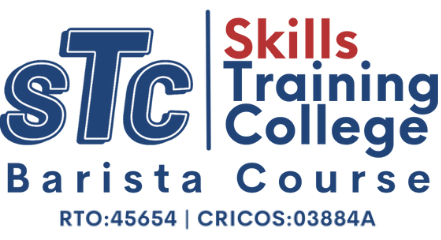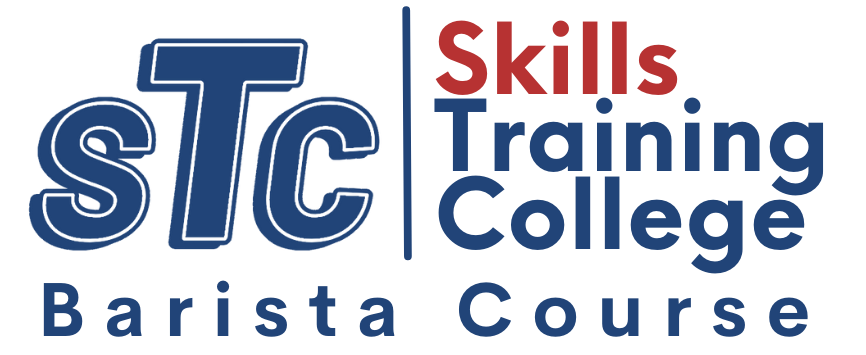Pre-infusion may seem like a mystical term from a coffee connoisseur’s lexicon. In the realm of coffee, it’s akin to a meditative practice for the coffee grounds, enlightening them before the brewing process commences. If this concept piques your interest, you’re in the right place. Let’s delve deeper into this article to refine your coffee brewing skills.
Your trusty coffee machine has been a reliable companion, but now it’s time to forge a closer bond. It’s imperative to acquaint yourself better with it, as this synergy will elevate your coffee-making prowess.
Gaining a comprehensive understanding of pre-infusion is pivotal in distinguishing yourself in the coffee industry, particularly with the emergence of innovative hybrid coffee varieties. Your proficiency in extraction techniques and flavour nuances will be paramount.
Have you been naturally inclined towards coffee-making? Here’s your chance to stand out by getting your Nationally Accredited Barista Coffee Certification.
What Is Pre-Infusion In A Coffee Machine?

Before the full brewing pressure is applied, coffee grounds undergo a soaking process. This method allows the water to saturate the coffee puck evenly and with reduced pressure, typically around three bars.
Pre-infusion guarantees that the coffee bed maintains a consistent level, enabling water to flow steadily at a pressure of nine bars. Ultimately, this technique results in more flavourful espresso shots and minimises room for error.
For those unfamiliar, pre-infusion introduces water into the coffee puck at a lower pressure than the standard. Typically, pre-infusion pressure falls within the range of 0.5 to 4 bars. Espresso machines usually have 1 to 2 bars allocated for pre-infusion.
Is It The Same as Pre-Brewing?

Pre-infusion differs distinctly from pre-brewing. Pre-infusion involves introducing water into the coffee puck at a lower pressure than the standard. This process aids in the removal of carbon dioxide from coffee cells, ensuring smoother water flow and preserving the coffee’s purity.
The technique entails a gradual increase in pressure, reaching its peak midway through extraction. This is a skill mastered by seasoned baristas with professional espresso machines.
For comprehensive training and same-day accreditation, enrol in our Nationally Recognised Barista Training course.
To initiate the process, espresso machine calibration is crucial. Gently manipulate the lever with minimal pressure. Allow a brief pause before commencing extraction. For optimal percolation, ensure the lever reaches the end of its stroke while making slight adjustments for pre-infusion.
Is Pressure Profiling Related To It?
In the realm of barista techniques, “pressure profiling” is often exemplified using a lever machine. This approach involves modulating water pressure throughout the extraction process.
Unlike electric pumps, which maintain consistent pressure, lever machines start with high pressure that gradually diminishes as the spring returns to its initial state.
When discussing pressure in coffee extraction, it encompasses not only the pump-generated force but also complex interactions with variables like flow rate, particle size, extraction time, temperature, and the properties of the coffee grounds.
Pressure For Each Extraction Method
Each extraction method, aside from the distinctive coffee grind, exhibits its pressure dynamics and resistance traits, resulting in specific dispensing pressure ranges.
Unlike a moka kettle that relies on steam for pressure, an espresso machine employs a pump to pressurise hot water to a higher degree.
In contrast, drip or pour-over methods rely solely on gravity for water to pass through coffee powder or grounds, without creating any pressure. The type and efficiency of the pump play a pivotal role in espresso preparation, with certain features contingent on pumping specifications.
What Is The Right Pressure BAR?

BAR measurement, or barometric pressure, denotes the atmospheric force applied to coffee grounds. For instance, a reading of 9 BAR signifies that nine times the Earth’s average atmospheric pressure (1 BAR) is exerted on the water forced through the coffee grounds via the espresso machine.
While certain espresso machines can achieve higher BAR levels, the optimal range for pressure passing through coffee grounds falls between 7 and 11 BARs. A robust and intense espresso shot can be achieved with machines operating at 9 BARs of pressure.
Does Pressure Create Crema?
For espresso aficionados who meticulously observe details like the luscious golden crema atop their prized shots, a pressure of at least 7 bars is deemed essential when traversing through the coffee grounds. Nevertheless, there’s a prevalent argument that while 7 BARs may constitute the baseline requirement for a commendable espresso shot, considerably higher pressure is imperative to fully unlock the potential of your coffee beans.
What Does An Ideal Espresso Puck Look Like?

Espresso pucks are the compressed coffee grounds left in the filter basket post-extraction. Their consistency—whether moist, soupy, firm, or solid—stems from the shot’s preparation.
A properly crafted puck exhibits even distribution of coffee grounds in the portafilter basket. It is then uniformly pressed for consistent extraction. The surface of the puck should be flat, smooth, and free from irregularities. When the puck is compact and firm, it indicates that the coffee has been adequately tamped and compressed.
The Pros and Cons of Pre-Infusion
Advantages:
- Elevates the depth and nuances of coffee flavours.
- Yields a creamier, more indulgent brew.
- Coffee blooming contributes to a well-balanced cup.
- Ensures thorough saturation of coffee grounds, preventing any dry patches.
Disadvantages:
- Requires 30 to 60 seconds for water to thoroughly soak ground coffee.
- Inadequate brewing techniques may lead to over-extraction of the coffee.
Is Pre Infusion Important?
While not a critical brewing step, pre-infusing coffee grounds significantly impact the coffee’s flavour and overall quality.
This process allows the grounds to open up, priming them for flavour extraction. Remember the yoga analogy mentioned earlier?
Utilising pre-infusion will result in a distinct coffee flavour. If you already have a tried-and-true recipe, it may not be necessary. However, we encourage experimentation with water and coffee ratios. Ultimately, pre-infusion may become your go-to technique, or you might find it unnecessary.
How Long Does Pre-Infusion Take?
Before initiating the elevated extraction pressure, it is advisable to engage in a pre-infusion period, which usually spans from 2 to 8 seconds. The specific duration hinges on the type of espresso machine in use and may differ when preparing single or double shots. Familiarising yourself with your machine’s unique characteristics, including the time it takes for coffee to commence dripping from the spout, requires a bit of practice.
How Should I Time Pre-Infusion?
Here are three effective methods to time your Pre Infusion:
- Initiate timing when you activate the start button or raise the lever. This accounts for the entire brewing/extraction duration, encompassing pre-infusion.
- Commence timing when the pump starts. This signifies that the pre-infusion time is separate from the extraction time, and timing initiates only after the full 9 bars of pressure are engaged.
- Start the timer when the initial espresso drip enters the cup. This approach is quite similar to the second one, but it relies on a visual cue rather than counting.
The Verdict – Does Pre-Infusion Work?
Pre-infusion, with ample time, resources, and knowledge, significantly enhances the chances of crafting a robust and delightful espresso shot.
For those who relish fine-tuning every step of the espresso brewing process, refining pressure profiling skills can be a gratifying pursuit.
Many beginners grapple with achieving even distribution of coffee grounds in the portafilter. Pre-infusion offers an effective remedy for this challenge.
Creating exceptional espresso doesn’t necessitate a sophisticated laboratory; it’s about understanding key chemical processes.
Through pre-infusion, you bring the luscious crema and harmoniously balanced flavour one step closer to perfection. If you would like to learn how to create the perfect coffee brew every time, then why not enrol in a nationally recognised barista course? You can get qualified in just one day.



